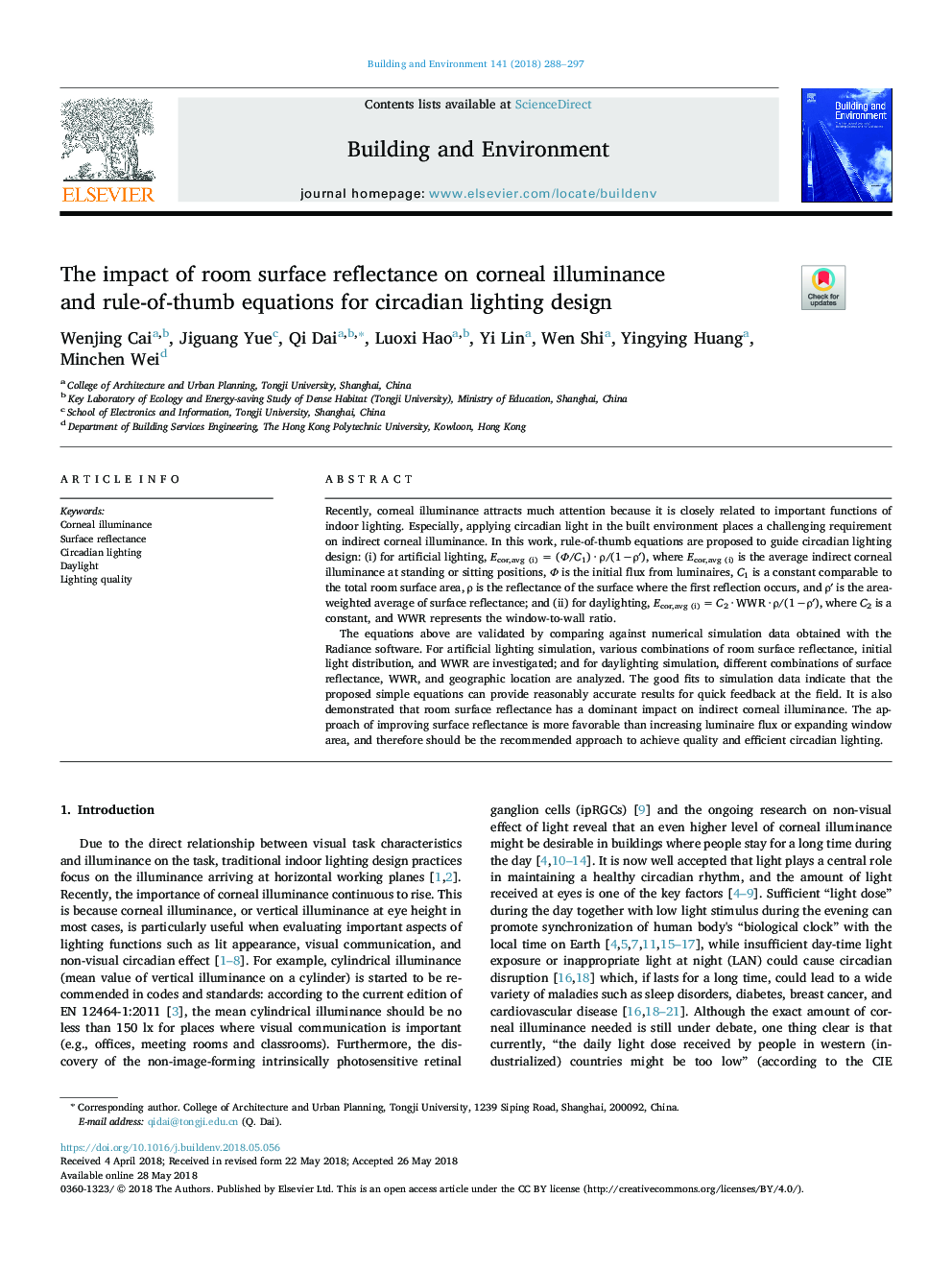| Article ID | Journal | Published Year | Pages | File Type |
|---|---|---|---|---|
| 6697038 | Building and Environment | 2018 | 10 Pages |
Abstract
The equations above are validated by comparing against numerical simulation data obtained with the Radiance software. For artificial lighting simulation, various combinations of room surface reflectance, initial light distribution, and WWR are investigated; and for daylighting simulation, different combinations of surface reflectance, WWR, and geographic location are analyzed. The good fits to simulation data indicate that the proposed simple equations can provide reasonably accurate results for quick feedback at the field. It is also demonstrated that room surface reflectance has a dominant impact on indirect corneal illuminance. The approach of improving surface reflectance is more favorable than increasing luminaire flux or expanding window area, and therefore should be the recommended approach to achieve quality and efficient circadian lighting.
Related Topics
Physical Sciences and Engineering
Energy
Renewable Energy, Sustainability and the Environment
Authors
Wenjing Cai, Jiguang Yue, Qi Dai, Luoxi Hao, Yi Lin, Wen Shi, Yingying Huang, Minchen Wei,
